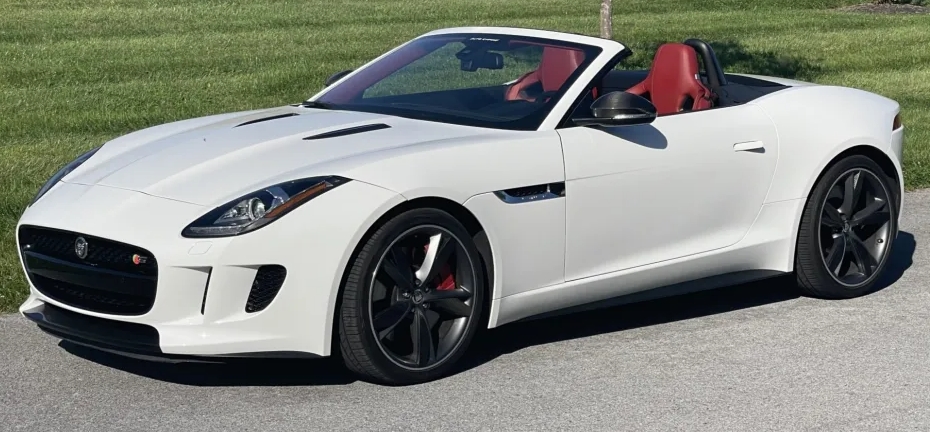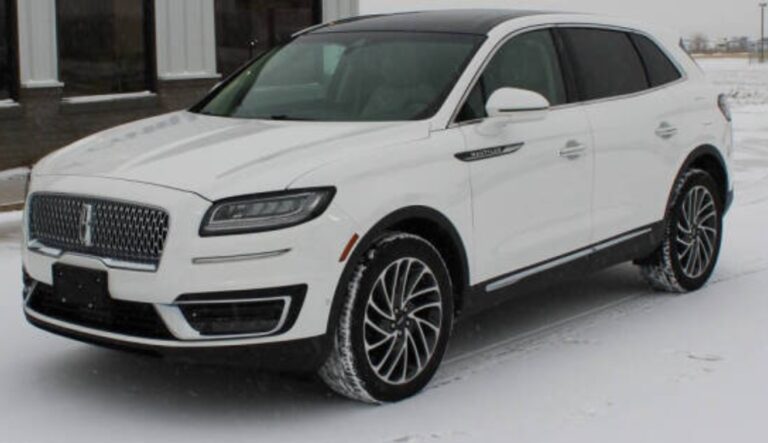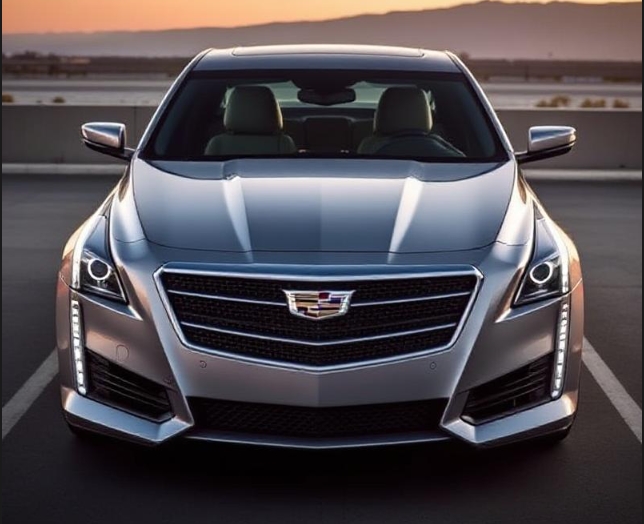The Evolution of the Jaguar F-Type
The Jaguar F-Type stands as a quintessential embodiment of British sports car craftsmanship, blending heritage, performance, and innovative design into a compelling package. Since its inception in 2013, the F-Type has evolved through various generations, models, and trim levels, reflecting technological advancements, shifting market preferences, and Jaguar’s commitment to maintaining its sporting pedigree. This article offers a detailed chronological overview of the Jaguar F-Type’s evolution, including production years, model variants, and trim levels.
Origins and Introduction (2013–2014)
Launch and Philosophy
Jaguar officially launched the F-Type in 2013, unveiling it as a modern reinterpretation of its storied sports car heritage. The F-Type was developed as a successor to the Jaguar XK and was designed to compete with high-performance sports cars such as the Porsche 911 and Mercedes-Benz SL-Class.
Design and Platform
Built on the aluminum-intensive Jaguar D7a platform, the F-Type boasted lightweight construction, contributing to agile handling and impressive performance metrics. Its design emphasized sleek, aggressive lines, a long hood, and a short rear deck, embodying classic sports car proportions.
Initial Models and Trim Levels
At launch, the 2013 F-Type was available in two primary body styles:
- F-Type Coupe
- F-Type Convertible (Roadster)
Engine Options
The initial lineup featured three engine choices:
- F-Type V6 (3.0-liter supercharged V6)
- F-Type V6 Standard: 340 horsepower, 332 lb-ft torque.
- F-Type V6 S: 375 horsepower, 339 lb-ft torque.
- F-Type V8 (5.0-liter supercharged V8)
- F-Type V8 S: 495 horsepower, 460 lb-ft torque.
Transmission and Drivetrain
All models came equipped with an 8-speed automatic transmission (ZF 8HP), with rear-wheel drive as standard. An optional all-wheel-drive (AWD) system was available on certain trims, especially the V8 models, providing enhanced traction.
Performance Figures
- The V6 models accelerated from 0-60 mph in approximately 5.1 seconds (V6) and 4.8 seconds (V6 S).
- The V8 S could achieve 0-60 mph in about 4.2 seconds.
- Top speeds ranged from 155 mph (electronically limited) to 186 mph (V8 S).
Mid-Cycle Updates and Refinements (2015–2016)
2015 Refresh
While the 2013 debut was well-received, Jaguar introduced a mid-cycle refresh in 2015 to enhance the F-Type’s appeal:
- Exterior Tweaks: Slight revisions to front and rear bumpers, new LED headlights and taillights, and additional color options.
- Interior Enhancements: Improved materials, updated infotainment system, and additional trim options.
Model Lineup
The core structure remained consistent, with the introduction of several notable features:
- F-Type R: Introduced as a higher-performance variant.
- Available Transmission: The ZF 8-speed automatic remained standard across models.
- Drive Options: Rear-wheel drive remained standard, with AWD optional on V8 models.
The F-Type R and Range Expansion (2016–2017)
Introduction of the F-Type R (2016)
In 2016, Jaguar expanded the F-Type lineup with the F-Type R, a more powerful and performance-focused version:
- Engine: 5.0-liter supercharged V8 producing 550 horsepower and 502 lb-ft torque.
- Performance: 0-60 mph in approximately 3.9 seconds; top speed around 186 mph.
- Features: Adaptive suspension, active exhaust, larger brakes, and distinctive R styling cues (badging, wheels).
Range of Models in 2016
By 2016, the lineup included:
- F-Type V6
- Standard (340 hp)
- V6 S (375 hp)
- F-Type V8 S (2016)
- 495 hp
- F-Type R (2016)
- 550 hp
Trim levels varied primarily by engine and performance features, with some markets offering “Sport” or “Performance” packages.
.
Is The Environment Better Because of Current Hot Rods?
.
Introduction of the F-Type SVR (2016–2017)
Ultimate Performance Variant
Jaguar introduced the F-Type SVR in 2016 as the ultimate, track-focused version:
- Engine: 5.0-liter supercharged V8, tuned to produce 575 horsepower and 516 lb-ft torque.
- Performance: 0-60 mph in approximately 3.5 seconds; top speed of 200 mph.
- Features: Aerodynamic enhancements, carbon fiber components, and bespoke suspension tuning.
The SVR was limited in production, emphasizing exclusivity and extreme performance.
The 2018 Facelift and New Model Variants
Facelift Highlights
For the 2018 model year, Jaguar introduced a significant facelift to the F-Type, both exterior and interior:
- Exterior: Restyled front grille, revised bumpers, new LED lighting signatures, and optional new wheel designs.
- Interior: Updated cabin with a new infotainment system (InControl Touch Pro), improved materials, and optional digital instrument cluster.
Engine Lineup and Trim Levels
The 2018 refresh saw the following offerings:
- F-Type P300 (2.0-liter turbocharged four-cylinder)
- Entry-level model introduced to broaden accessibility.
- Produces 300 horsepower; 0-60 mph in around 5.4 seconds.
- F-Type P340 (3.0-liter supercharged V6)
- 340 horsepower; 0-60 mph in approximately 5.1 seconds.
- F-Type P380 (3.0-liter supercharged V6)
- 380 horsepower; performance-oriented trim.
- F-Type P400 (3.0-liter supercharged V6)
- 400 horsepower; most potent V6 variant.
- F-Type R-Dynamic Models
- A new designation introduced in 2018 to denote models with sportier styling and enhanced features, available across various engine options.
V8 Variants and Special Editions
- F-Type V8 S remained available, producing 575 horsepower.
- F-Type SVR continued as the top-tier model, with the same 575-hp engine as before, featuring further aerodynamic enhancements and performance upgrades.
The Final Years and Discontinuation (2019–2020)
Limited Editions and Special Packages
In its final production years, Jaguar offered special versions to celebrate the model’s legacy:
- F-Type Heritage Edition (2019)
- Features unique color schemes, badges, and interior trim.
- F-Type 400 Sport (2019)
- Launched to commemorate the 400-horsepower milestone.
- 400 horsepower, unique styling cues, and lightweight components.
Production End and Legacy
Jaguar announced the discontinuation of the F-Type after the 2020 model year, marking the end of its current iteration. The decision was driven by shifting market demands and the company’s strategic focus on electric vehicles.
Summary of Models and Trim Levels Throughout the F-Type’s Evolution
| Year Range | Body Styles | Engines | Notable Trim Levels / Variants |
|---|---|---|---|
| 2013–2014 | Coupe, Convertible | 3.0L V6 (340hp/375hp), 5.0L V8 (495hp) | Base, V6 S, V8 S |
| 2015–2016 | Coupe, Convertible | Same as initial, plus R variants | R, V8 S, introduction of F-Type R |
| 2016–2017 | Coupe, Convertible | Same plus SVR (575hp) variants | SVR, R, V8 S |
| 2018–2019 | Coupe, Convertible | 2.0L Turbo (300hp), 3.0L V6 (various hp), V8 S, SVR | R-Dynamic trims, 400 Sport, Heritage editions |
| 2020 | Discontinued | — | Final models, special editions |
Conclusion
The Jaguar F-Type’s journey from its debut in 2013 to its discontinuation in 2020 showcases a model that consistently emphasized performance, craftsmanship, and driving excitement. Its evolution reflected technological advancements such as turbocharging, digital instrumentation, and aerodynamic enhancements, all while maintaining its core identity rooted in Jaguar’s storied sports car heritage.
From the base V6 models to the blistering SVR, the F-Type offered a range of options to suit different enthusiasts’ desires. Each generation brought refinements that kept the F-Type relevant in an increasingly competitive segment. Although production has ceased, the F-Type remains a celebrated symbol of Jaguar’s commitment to sporty, elegant, and exhilarating automobiles.







